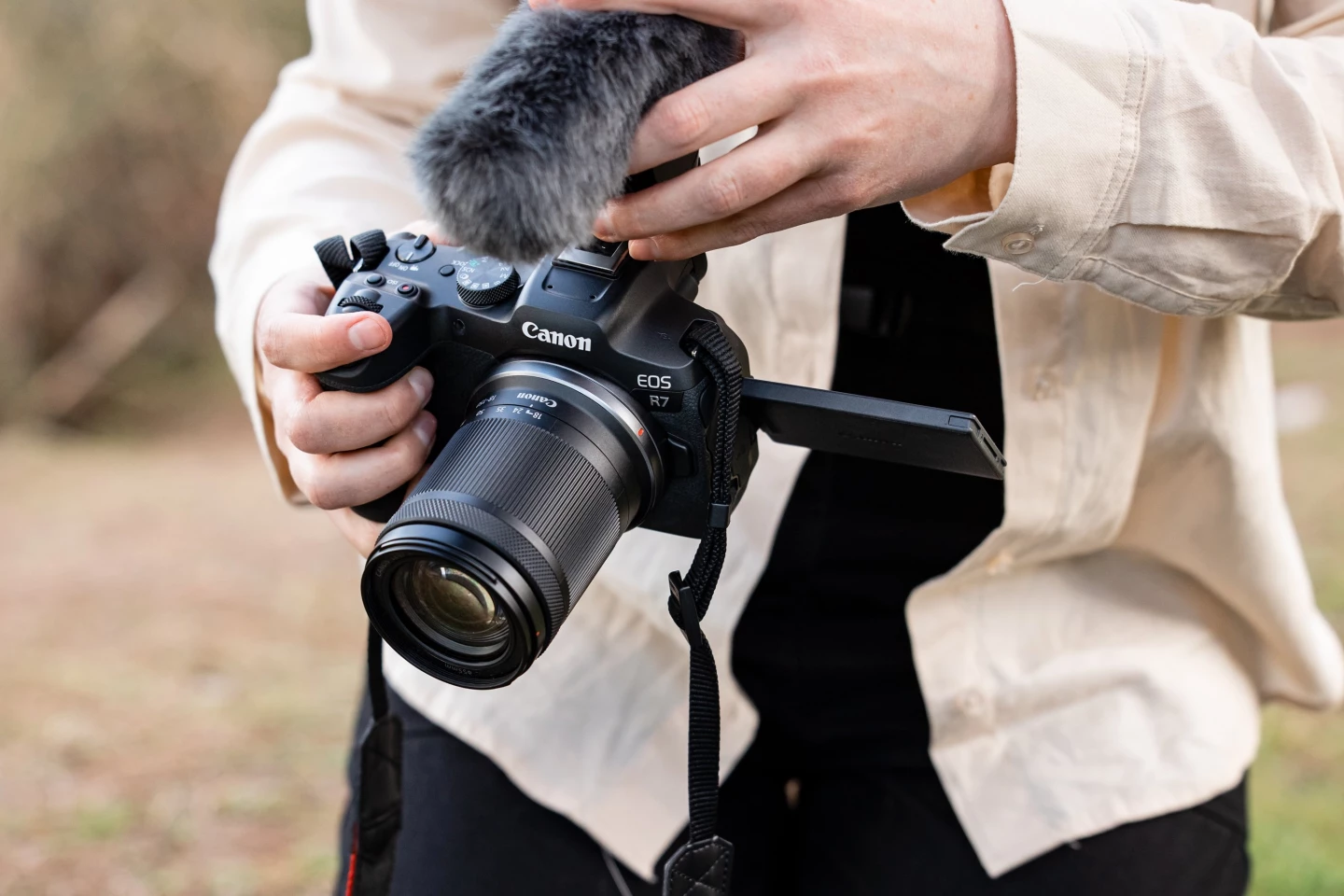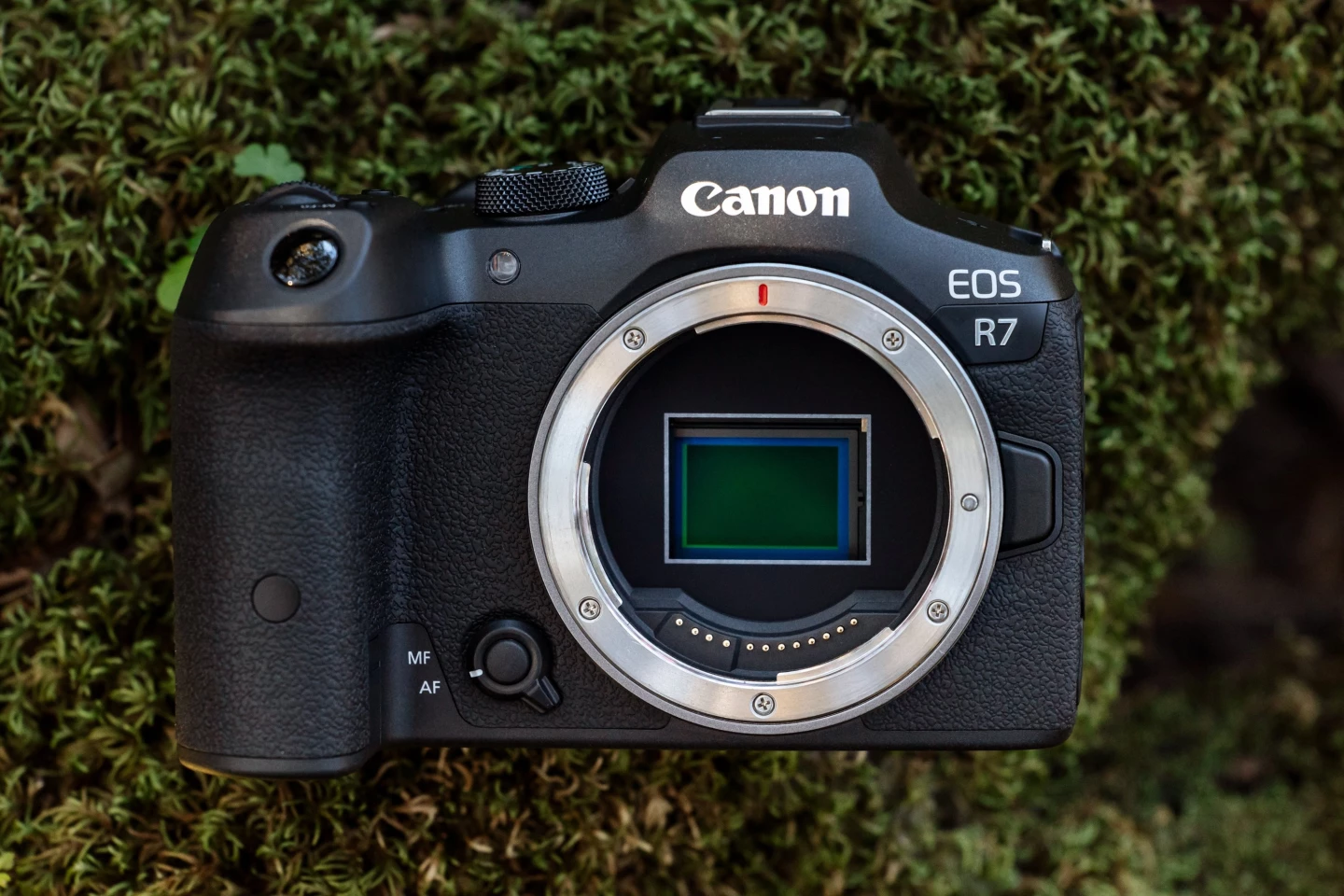Canon has added two more cameras to its EOS R series of mirrorless cameras, this time made more compact by employing small imaging sensors. The EOS R7 is being aimed at hobbyists and enthusiasts, while the EOS R10 is pitched at content creators.
The ESO R7 model has been designed for photographers "seeking an upgrade to their travel and vacation photos or to capture life-long family memories while opening a new world of creative and professional possibilities."
If features a newly developed 32.5-megapixel APS-C (22.3 x 14.8-mm) CMOS sensor and high-speed Dual Pixel autofocus technology, and works with the Digic X image processing engine to offer ISO100 to 32,000 light sensitivity, expandable to ISO51,200, and up to 15 frames per second continuous shooting using the mechanical shutter or 30 fps with the electronic shutter.

Up to seven stops of 5-axis in-body image stabilization are available to help smooth out camera shake during handheld videos or low-light photography, and the camera can record 4K/60p video that's oversampled from 7K.
Elsewhere you'll find a 2.36-million-dot OLED viewfinder, 3-inch 1.62-million-dot vari-angle LCD display, a multifunction shoe, 802.11n Wi-Fi and Bluetooth 4.2, and dual UHS II SD card slots.

The camera has body only dimensions of 5.2 x 3.56 x 3.61 in (132 x 90.4 x 91.7 mm), and weighs in at 18.7 oz (530 g). It's sealed to resist dust and moisture, and is of course compatible with Canon's RF mount lenses, but can also be used with EF glass via an adapter.
The EOS R10 model is more compact than its stablemate, at 4.82 x 3.46 x 3.28 in (122.5 x 87.8 x 83.4 mm), and tips the scales at a body only 13.48 oz (382 g). Canon says that this one is for "content creators looking for a camera option to capture high-quality action videos and images of sports, wildlife, and motorsports."

The camera is built around a new 24.2-MP APS-C CMOS sensor with Dual Pixel AF and people, animal and vehicle subject detection. It boasts the same light sensitivity range as the R7, and can also manage 15 shots per second using the mechanical shutter release, but tops out at 23 for the electronic shutter.
The R10 lacks in-body image stabilization but can offer digital compensation for movie recording, and those 4K videos can be captured at up to 30 fps, or cropped for up to 60 fps.

The OLED viewfinder here has slightly less magnification than the R7, and the 3-inch articulating LCD monitor comes with a lower onscreen resolution of 1.04 million dots. And this camera only has a single SD car slot, but does gain a built-in pop-up flash module.
Both cameras will be available toward the end of this year. The EOS R7 carries a body-only price tag of US$1,499 but can be had with a Canon RF-S18-150mm lens F3.5-6.3 IS STM kit lens for $1,899. The EOS R10 comes in at $979.99 for just the body, or a choice of kit lens options – the camera and Canon RF-S18-45mm F4.5-6.3 IS STM lens combo costs $1,099 and the body plus Canon RF-S18-150mm F3.5-6.3 IS STM lens comes in at $1,379. The videos below have more.













